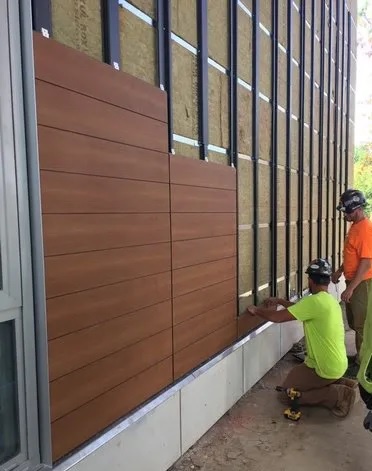High-Pressure Laminate (HPL) cladding has revolutionized the construction industry with its versatility, durability, and aesthetic appeal. Over the years, HPL cladding has undergone significant evolution, adapting to changing architectural trends, technological advancements, and sustainability requirements. In this blog post, we embark on a journey through the evolution of HPL cladding, exploring its transformative impact on modern construction practices.
-
Introduction of HPL Cladding: The inception of HPL cladding dates back to the mid-20th century when it emerged as a durable and cost-effective alternative to traditional building materials. Composed of layers of resin-impregnated kraft paper, decorative paper, and a top layer of melamine-impregnated decorative paper, HPL cladding offered architects and builders a wide range of design possibilities while ensuring weather resistance and structural integrity.
-
Technological Advancements: The evolution of HPL cladding has been closely intertwined with advancements in manufacturing technologies. Early iterations of HPL relied on conventional press techniques, limiting design flexibility and surface finishes. However, with the advent of digital printing, CNC machining, and advanced coating technologies, manufacturers can now produce HPL panels with intricate designs, textures, and finishes, catering to diverse architectural styles and project requirements.
-
Enhanced Durability and Performance: As sustainability and longevity increasingly shape construction practices, the demand for high-performance building materials like HPL cladding continues to rise. Modern HPL formulations incorporate additives and reinforcements to enhance durability, impact resistance, and fire retardancy, meeting stringent building codes and standards. Additionally, advancements in surface treatments and coatings have improved weather resistance, UV stability, and maintenance requirements, ensuring prolonged service life and reduced lifecycle costs.
-
Sustainable Practices: In response to growing environmental concerns, the evolution of HPL cladding has embraced sustainability principles across the entire product lifecycle. Manufacturers are adopting eco-friendly production processes, utilizing recycled materials, and obtaining certifications such as LEED and FSC to validate their commitment to environmental stewardship. Furthermore, HPL's long lifespan, recyclability, and low maintenance requirements contribute to sustainable building practices, making it a preferred choice for green construction projects.
-
Integration of Smart Technologies: In the era of smart buildings and digitalization, HPL cladding is evolving beyond its traditional role as a passive building envelope component. Integrating smart technologies such as sensors, actuators, and photovoltaic cells directly into HPL panels enables functionalities such as energy harvesting, climate control, and data monitoring. This seamless integration of technology enhances building performance, occupant comfort, and overall sustainability, ushering in a new era of intelligent building facades.
Conclusion: The evolution of HPL cladding epitomizes the transformative power of innovation in the construction industry. From its humble beginnings as a utilitarian building material to its current status as a symbol of architectural excellence and sustainability, HPL cladding continues to redefine the boundaries of design, performance, and functionality. As we look towards the future, HPL's evolution will undoubtedly continue, driven by a commitment to excellence, sustainability, and the relentless pursuit of innovation.


No comments yet